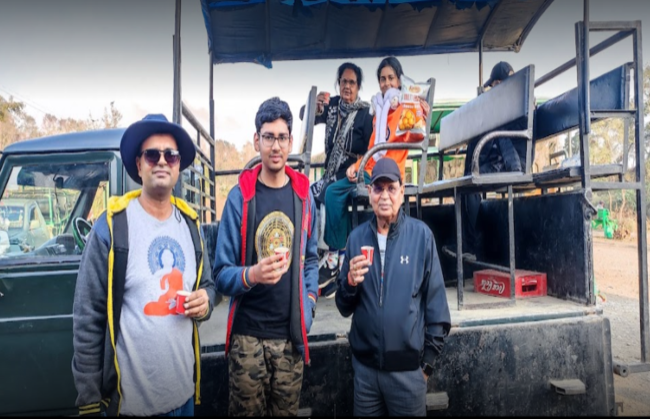What does the Kathmandu-Nagarkot-Chitwan Tour include?
The tour includes sightseeing in Kathmandu (temples, UNESCO sites), a visit to Nagarkot for sunrise and sunset views of the Himalayas, and a trip to Chitwan National Park for wildlife activities such as jungle safaris, bird watching, and canoe rides.
How long does the Kathmandu-Nagarkot-Chitwan Tour last?
The tour typically lasts 5 to 7 days, with 2-3 days in Kathmandu for sightseeing, 1 day in Nagarkot for scenic views, and 2-3 days in Chitwan for wildlife activities.
What is the best time to do the Kathmandu-Nagarkot-Chitwan Tour?
The best time to visit is from October to March, especially during the autumn (September to November) and spring (March to May) seasons when the weather is clear and perfect for sightseeing, mountain views, and safari activities.
What can I do in Nagarkot?
Nagarkot is known for its panoramic views of the Himalayas, especially the Everest range. You can enjoy a sunrise or sunset view from the hilltop, relax in nature, and experience the beauty of the surrounding countryside.
How do I get from Kathmandu to Nagarkot and Chitwan?
Kathmandu to Nagarkot: It’s about a 1.5 to 2-hour drive from Kathmandu.
Nagarkot to Chitwan: You can either take a 5-6 hour drive or a short flight from Kathmandu to Bharatpur, followed by a short drive to Chitwan.
What activities are available in Chitwan National Park?
In Chitwan, you can go on a jungle safari (by jeep or elephant), take a canoe ride on the Rapti River, enjoy a nature walk, and go on a bird watching tour. The park is famous for spotting wildlife such as tigers, rhinos, elephants, and various bird species.
Is the Kathmandu-Nagarkot-Chitwan Tour suitable for families or elderly travelers?
Yes, the tour is suitable for families and elderly travelers, as it involves moderate walking and sightseeing. However, for those with mobility issues, it's important to note that some parts of the trip (like walking in the national park) may require assistance.
What should I pack for the Kathmandu-Nagarkot-Chitwan Tour?
Kathmandu: Comfortable clothes for sightseeing, sunscreen, and a light jacket.
Nagarkot: Warm clothing for early mornings and evenings, as temperatures can drop, especially in the winter.
Chitwan: Lightweight, breathable clothes for safari, insect repellent, sunglasses, a hat, and comfortable shoes for walking.
Do I need a guide for the Kathmandu-Nagarkot-Chitwan Tour?
While it’s not mandatory, having a local guide in Kathmandu enhances your experience by providing historical and cultural context. In Chitwan, a guide is essential for the safari and wildlife activities to ensure safety and maximize your chances of spotting animals.
Is the tour safe for travelers?
Yes, the Kathmandu-Nagarkot-Chitwan Tour is safe, and all activities are managed by professional operators. The wildlife safaris in Chitwan are conducted with safety in mind, and your guide will ensure proper safety protocols are followed.
What is the cost of the Kathmandu-Nagarkot-Chitwan Tour?
The cost of the tour depends on the accommodation type and mode of transport but generally ranges from ₹20,000 to ₹45,000 INR ($250 to $550 USD) per person for a 5-7 day package, including transportation, accommodation, and some meals.
Can I customize my itinerary for this tour?
Yes, the tour is flexible, and most travel agencies allow for customization. You can adjust the number of days in each location, the activities you want to do, and the level of comfort during the trip.
Is there mobile network coverage in Nagarkot and Chitwan?
Both Nagarkot and Chitwan generally have mobile network coverage, but it can be weak or limited in some remote areas. Internet access may also be slower, especially in more rural locations.
What wildlife can I see in Chitwan?
Chitwan National Park is home to a variety of wildlife, including tigers, one-horned rhinoceros, elephants, crocodiles, leopards, and over 500 species of birds. It's one of the best places for wildlife enthusiasts to spot rare and endangered species.
Can I extend the tour to other destinations?
Yes, you can easily extend your tour to other destinations in Nepal, such as Lumbini (birthplace of Buddha), Pokhara (for lakes and trekking), or the Annapurna region for trekking.




